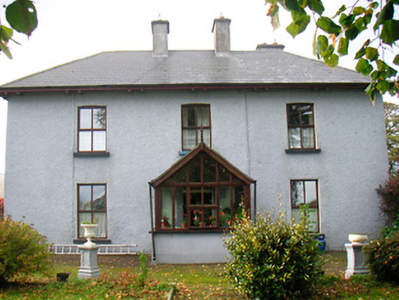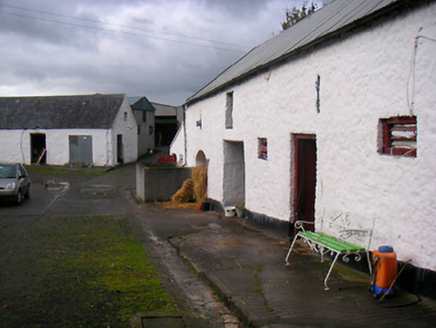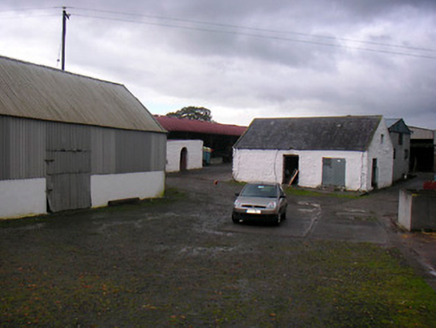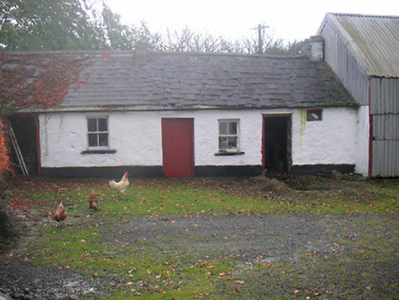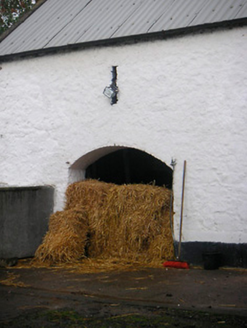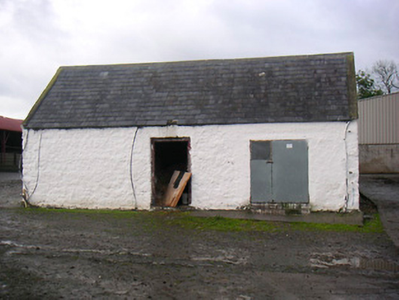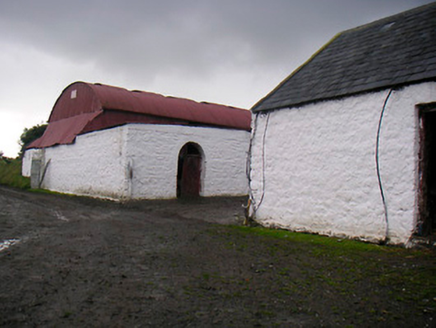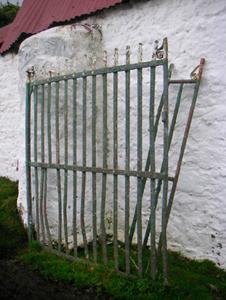Survey Data
Reg No
15401909
Rating
Regional
Categories of Special Interest
Architectural
Original Use
Farm house
In Use As
Farm house
Date
1840 - 1880
Coordinates
250183, 255393
Date Recorded
13/10/2004
Date Updated
--/--/--
Description
Detached three-bay two-storey house on L-shaped plan, built c.1860, with projecting glazed single-bay entrance porch to centre of front façade (east). Hipped slate roof with overhanging bracketed eaves and two central rendered chimneystacks. Roughcast rendered walls with smooth cement rendered finish to later porch. Square-headed openings with replacement windows and doors. Substantial complex of outbuildings to the rear (south and west), c.1800 and c.1860. Complex comprises (1) various single and two-storey whitewashed outbuildings with pitched natural slate or corrugated-iron roofs, square-headed openings and segmental-headed carriage-arches and (2) a five-bay single-storey white washed lime rendered outbuilding, possibly originally a house, having pitched natural slate roof, square-headed openings with two-over-two pane timber sliding sash windows and battened timber doors. Rubble stone boundary walls and wrought-iron gates. Located to the northeast of Mullingar.
Appraisal
A well-proportioned, if modestly detailed, mid-to-late nineteenth-century farm house, which retains its early form and character despite recent alterations. The form and layout of this house is typical of the many middle-sized farm houses that were built in great numbers in the Irish countryside in the decades immediately following the Great Famine. The overhanging bracketed eaves are an attractive feature that lends this building a considerable presence in the rural landscape. The attractive and substantial complex of vernacular whitewashed outbuildings to the rear survives in good condition and many of the structures seem to predate the construction of the main house itself. The single-storey house to the rear, now in use as an outbuilding, may well be the original dwelling house and is, therefore, a good example of the evolution of a farmstead in nineteenth century Ireland. The boundary walls and wrought iron gates add to this appealing complex, which makes a positive contribution to the historic character of the locality.

